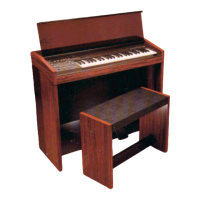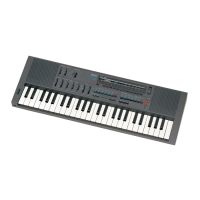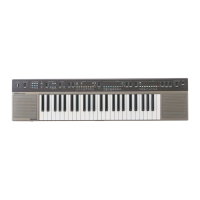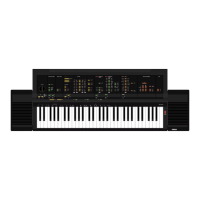Reference Song Mode
Song Job mode
228
Owner’s Manual
Rate Determines the percentage by which the gate time of the target notes will be changed.
Settings below 100% shorten the notes, and settings above 100% lengthen the notes proportionately. When the Set
All parameter (above) is set to something other than “off,” this parameter appears as “***” and cannot be changed.
Settings: 000% ~ 200%, ***
Offset Adds a fixed value to the Rate-adjusted gate time values. A setting of 0 produces no change. Settings below 0
shorten the gate time, and settings above 0 lengthen the gate time. When the Set All parameter (above) is set to
something other than “off,” this parameter appears as “***” and cannot be changed.
Settings: -9999 ~ +9999, ***
04: Crescendo
This Job lets you create a crescendo or decrescendo over the specified range of notes. (Crescendo is a gradual
increase in volume, and decrescendo is a gradual decrease.)
TR (Track)
001 : 1 : 000 - 999 : 4 : 479
Determines the track (01-16, all) and range of measures/beats/clocks over which the Job is applied.
VelocityRange Determines the intensity of the crescendo or decrescendo. The velocity values of the notes in the specified range
are gradually increased or decreased starting at the first note in the range. The velocity of the last note in the range
becomes the original velocity of the note plus the Velocity Range value. If the resultant velocity is outside the 1 ~ 127
range, it is set to 1 or 127 accordingly. Settings greater than 0 produce a crescendo, and settings less than 0
produce a decrescendo. A setting of 0 produces no effect.
Settings: -127 ~ +127
05: Transpose
Transpose lets you change the key or pitch of the notes in the specified range.
TR (Track)
001 : 1 : 000 - 999 : 4 : 479
Determines the track (01-16, all) and range of measures/beats/clocks over which the Job is applied.
Note Determines the range of note pitches over which the Job is applied. You can also set the Note directly from the
Keyboard, by holding down the [INFORMATION] button and pressing the desired key (page 53).
Settings: C-2 ~ G8
Transpose Transposes notes in the specified range (in semitones). A setting of +12 transposes up one octave, while a setting of
-12 transposes down an octave. A setting of 0 produces no change.
Settings: -127 ~ +127
06: Glide
The Glide Job replaces all notes following the first note in the specified range with pitch bend data, producing
smooth glides from note to note. This is ideal for producing guitar-like slide or note-bending effects.
TR (Track)
001 : 1 : 000 - 999 : 4 : 479
Determines the track (01-16, all) and range of measures/beats/clocks over which the Job is applied.
GlideTime Determines the length of the glide. Higher values produce a longer glide between notes.
Settings: 000~100
PBRange (Pitch Bend Range) Determines the maximum pitch bend range to be applied by the Glide Job (in semitones).
Settings: 01~24
07: Create Roll
This Job creates a series of repeated notes (like a drum roll) in the specified range with the specified continuous
changes in clock step and velocity. This is ideal for creating fast staccato rolls and special stuttering effects.
TR (Track)
001 : 1 : 000 - 999 : 4 : 479
Determines the track (01-16) and range of measures/beats/clocks over which the Job is applied.
StartStep (Starting Step)
EndStep (Ending Step)
Determines the size of the step (i.e. the number of clocks) between each note in the roll. Both the starting and
ending clock values can be specified, making it easy to create rolls in which the step size varies during the roll.
Settings: StartStep: 001~999, EndStep: 001~999
Note Determines the specific note (or instrument in Drum voices) for the roll effect. You can also set the note directly from
the Keyboard, by holding down the [INFORMATION] button and pressing the desired key (page 53).
Settings: C-2~G8
StartVelo (Starting Velocity)
EndVelo (Ending Velocity)
Determines the velocity of the notes in the roll. Both the starting and ending velocity values can be specified, making
it easy to create rolls in which the velocity increases or decreases. This lets you create rolls that gradually increase or
decrease in volume (crescendo/decrescendo) — a technique often used in dance music.
Settings: StartVelo: 001~127, EndVelo: 001~127
08: Sort Chord
This Job sorts chord events (simultaneous note events) by order of pitch. The sort affects the order of the notes in
the Event List display (page 124), but does not change the timing of the notes. When used to pre-process chords
before using the Separate Chord Job (below), Chord Sort can be used to simulate the “stroke” or strumming sound
of guitars and similar instruments.

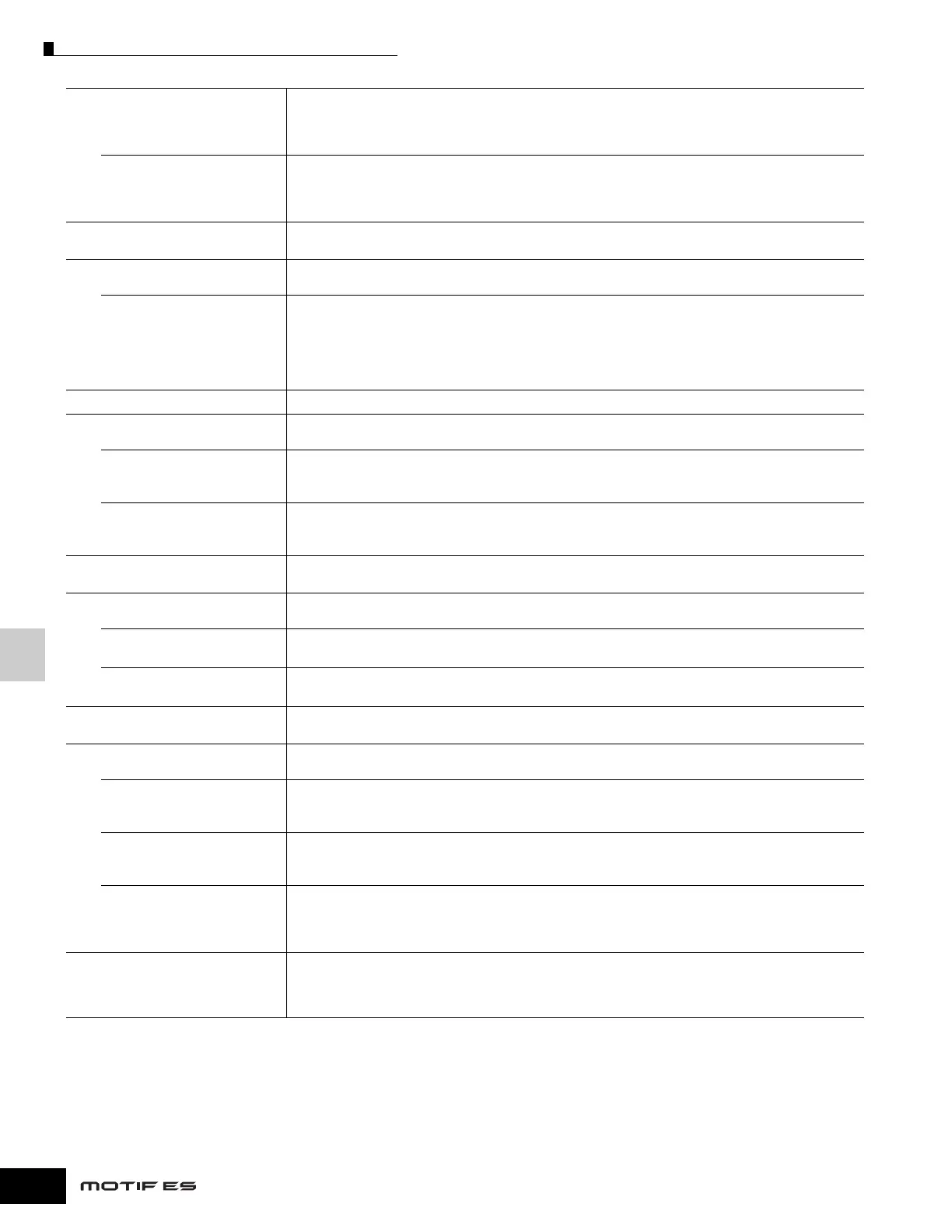